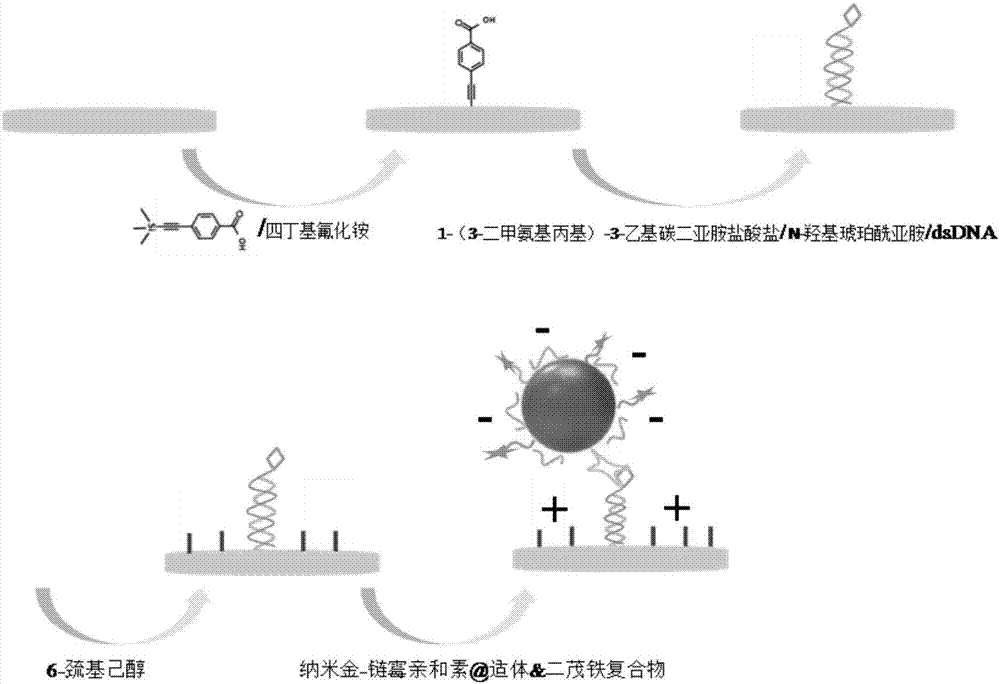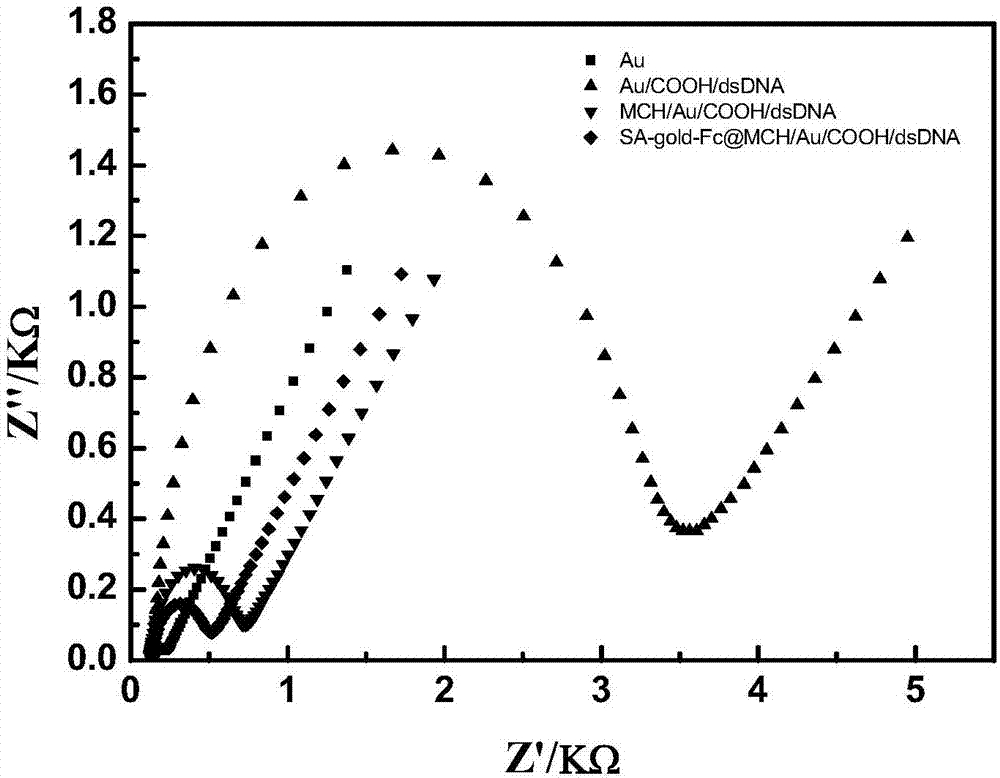Charge effect-based aptamer sensor, and construction method and application thereof
A technology of aptamer sensor and construction method, which can be applied in the fields of instruments, scientific instruments, electrochemical variables of materials, etc., can solve the problems of high cost, low sensitivity, and easy shedding of modified thiol molecules, and achieves simple construction method and low detection limit. , good repeatability
- Summary
- Abstract
- Description
- Claims
- Application Information
AI Technical Summary
Problems solved by technology
Method used
Image
Examples
Embodiment 1
[0043] (1) A method of constructing a biosensor on an electrode, the steps are as follows:
[0044]Take a small centrifuge tube, mix 5 μL of 50 μM 4-[(trimethylsilyl)ethynyl]benzoic acid THF solution with 50 μL of 20 μM tetrabutylammonium fluoride THF solution, then invert on the polished electrode, Soak the electrode completely in the mixed solution and react for 1h at room temperature to form Au-C bonds.
[0045] Prepare 10 μM DNA1 and 10 μM DNA2 solutions respectively, and mix and incubate them at 37°C for 2 hours to obtain a dsDNA mixture.
[0046] The electrode was rinsed with THF, and the incubated dsDNA solution was mixed with 50 μM EDC (1-(3-dimethylaminopropyl)-3-ethylcarbodiimide hydrochloride) and 50 μM NHS (N-hydroxysuccinate imide) solution mixed with the same volume, put it upside down on the electrode, and let it stand for 3 hours. The amide reaction between the amino group on DNA1 and the -COOH of 4-[(trimethylsilyl)ethynyl]benzoic acid occurs, thereby making ...
PUM
 Login to View More
Login to View More Abstract
Description
Claims
Application Information
 Login to View More
Login to View More - R&D Engineer
- R&D Manager
- IP Professional
- Industry Leading Data Capabilities
- Powerful AI technology
- Patent DNA Extraction
Browse by: Latest US Patents, China's latest patents, Technical Efficacy Thesaurus, Application Domain, Technology Topic, Popular Technical Reports.
© 2024 PatSnap. All rights reserved.Legal|Privacy policy|Modern Slavery Act Transparency Statement|Sitemap|About US| Contact US: help@patsnap.com










